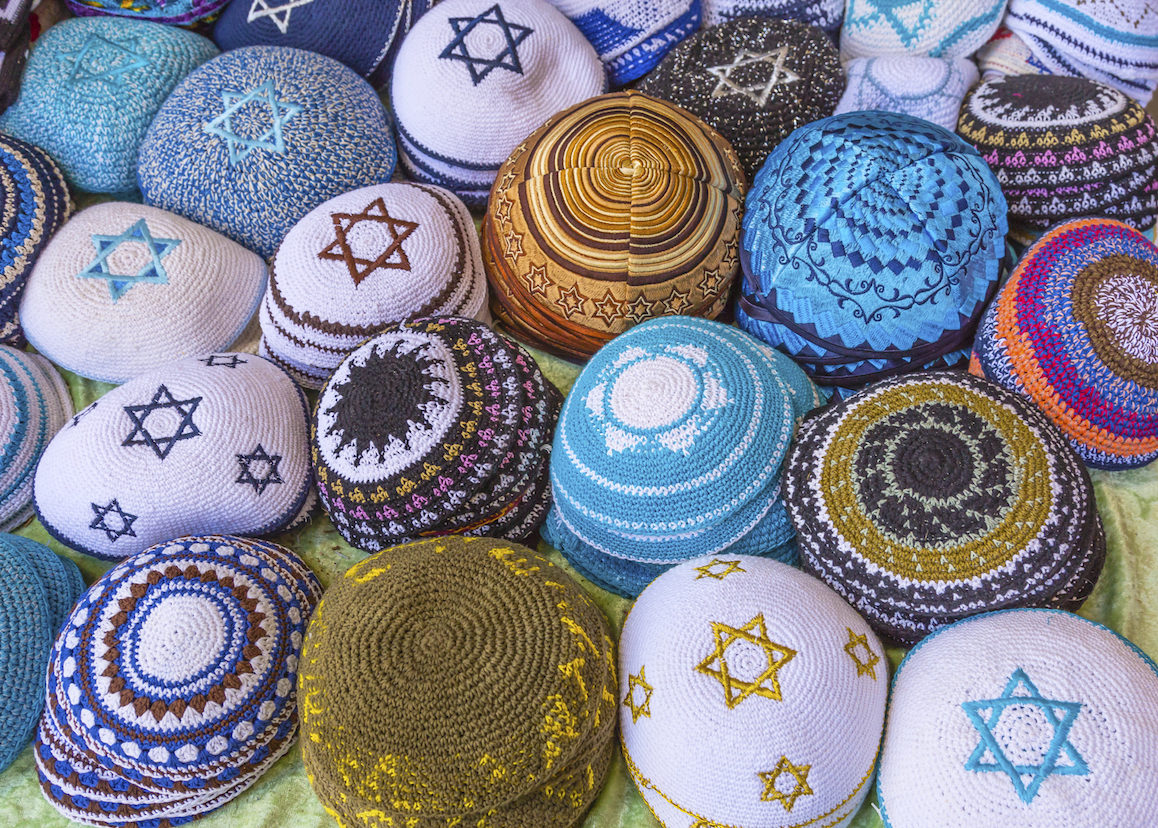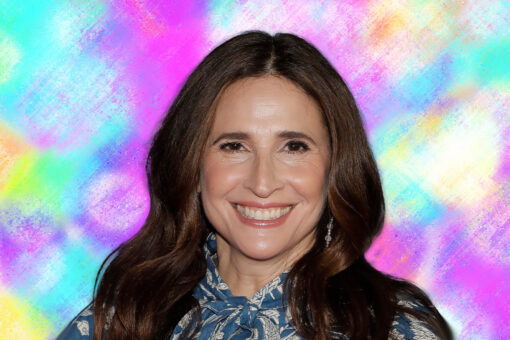I remember my first kippah, but not my last.
My first came to me as a 5-year-old girl, given to me by my mother. Although I didn’t wear it at the time, I loved it immediately: white suede with a glittery puff paint alefbet, it even had my name in the center.
The last time I wore a kippah was only a few weeks ago, nearly two decades after I got my first. It occurs to me that I don’t remember which was the last I wore, my kippah collection now in the dozens.
I began full-time kippah wearing at the conclusion of the summer of 2016. After spending two months in yeshiva where I covered my head during classes (which is to say, nearly all day), I was so accustomed to wearing a kippah that I couldn’t imagine going back to a bare head. Before hitching a shared cab back to the Ben Gurion Airport, I clipped a colorful crocheted kippah into my hair and proudly shared pictures of my new sartorial status to my friends. This was a time to replete with pure excitement: I cherished the weight of being seen as a religious Jew in my town where many people have never even met one, proud of this responsibility I would now carry to be an honorable representation of the Jewish people.
Little did I know then that I would eventually take my kippah off in realizing my failure to represent myself to the Jewish people.
It seems to surprise everyone that I never associated wearing a kippah with gender. Even most of my halakhic egalitarian friends have avoided wearing one, being unable to shake the connection to masculinity. It’s also true, though, that gender was never a consideration factor in my Jewish practice until quite recently. Much has changed in the two and a half years since I began wearing a kippah full-time: Namely, I’ve become more religious. Much more religious.
I often have a hard time recognizing myself in pictures that are only a handful of years old. Peering into a closet of mid-calf length skirts, it’s hard to believe I ever wore shorts. This change is recent enough to be visible from a scroll though my Facebook profile pictures — sometimes I wonder if people stalking my page wonder what happened to me. I wonder that too, sometimes.
For the most part, I adored my kippah-covered head. I liked being visibly identifiable as Jewish to all, and I found comfort in reaching up to feel the saucer-sized fabric in my thick curls. Of course, there were the religious aspects as well. I’ve long been accustomed to cover my head when praying, so it made sense to have my head covered at all times for impromptu blessing making. It made sense, too, to begin full-time kippah wearing as I became more involved with Jewish observance. Again, my Judaism at the time was still fairly de-gendered, so the association between kippot and religious Judaism went unquestioned despite being a woman.
Tzniut, or modesty, has become an important value as my religiosity has increased. In addition to covering certain parts of my body, I think consciously about what message my clothing is sending to the world. I prefer the translation of tzniut as “dignity”: Is my outfit dignifying myself? While I don’t care what people think about me (for the most part), I have come to realize the all-importance of the image in religious Judaism. I don’t think this is bad, actually. I think there is comfort in being visually identified with your community. However, this is where the kippah becomes complicated.
I float between many communities: my liberal, incredibly queer school; my Orthodox synagogue; the Conservative rabbinical school I just applied to. This fluidity has become necessary; as a gay, leftist, academic, frum Jew, the boundaries of my personhood spill between spaces. I embrace being part of many different communities, but it is certainly not without difficulty. It logically follows that being part of a community is necessary for maintaining Jewish observance, but what often goes unsaid is that it is almost as vital to fit in to that community.
An inconvenient truth: Fitting in is hard when you are me. Fully fitting into to an observant Jewish life is impossible when you are me.
As much as I hesitate to admit it, I want to fit in. Badly, in fact. I go to the kosher grocery stores and I long to look just like the other women. Although always fleeting, sometimes there are pangs of sadness that I won’t have one of their families with the husband and a gaggle of kids who share our features. Above all, I longed to not be stared at because of my kippah.
I used to be angry at all of the looks I got related to the kippah, but at some point I realized that it isn’t totally the fault of those doing the staring. It is simple reality at this moment in time that a woman in a kippah will never be assumed to be religious. I can’t have it both ways: I can’t choose to stand out while expecting to fit in. I used to take pride in being somewhat visually confusing (a woman in a kippah and obviously modest dress are confusing to virtually all Jews), but I eventually realized this to be unadvisable, both from the perspective of community and of my own sanity. Many things I am, but that doesn’t mean I can or need to display all of them at once.
These realizations came to me over time. As I became more religious, the desire to be accepted in observant spaces grew. The comfort with answering questions lessened. Above all, and going back to my conception of tzniut, I realized I harbored a budding discomfort around the image I present. Having many identities, being part of many communities, I realize that it is out of my control to universally fit in. What is in my control, though, is at least to present one cohesive image. This may seem like settling, but it was actually a refreshing realization to stumble upon. I may still stand out, I may still get mislabeled, but I still possess the power to use my body as a canvas to tell the world who I am.
Eventually, I had to be honest with myself in that my greatest visual desire at the moment is to be read as a religious Jewish woman. In this honesty, I also released myself from the expectation to be performing every identity at all times. After all, that is part of what tzniut is to me, and another translation: privacy. Keeping parts of myself private at certain times doesn’t mean I don’t love them.
So, I wore my last kippah a few weeks ago. Just like the first day I wore one publicly, it was without fanfare. I simply got up and left the house bareheaded. Momentous and quiet, all at once.
I still have my stack of kippot on my dresser, where they’ve always lived. I don’t know what I’ll do with them — if I’m honest, I’m keeping them in the hope that perhaps one day fewer assumptions will be made about the women who wear them.
I think back on my younger self, that bright-eyed feminist who would do it all. And even further back to that five-year-old little girl, not a thought in her mind that being a girl had anything to do with the little hat in front of her. I worry that I am disappointing those younger selves with my recent choices. But I don’t have to be them anymore, and I certainly don’t have to make them happy.
In so many ways, I’m standing in front of a door I never thought I would find myself facing. I never thought I’d be religious, and then I was. I never thought I’d alter my sartorial choices based on what others think, but then I did. I never knew gender could cause such strife for someone who never questioned it, but it really does.
So yes, I became more religious and stopped wearing a kippah.



